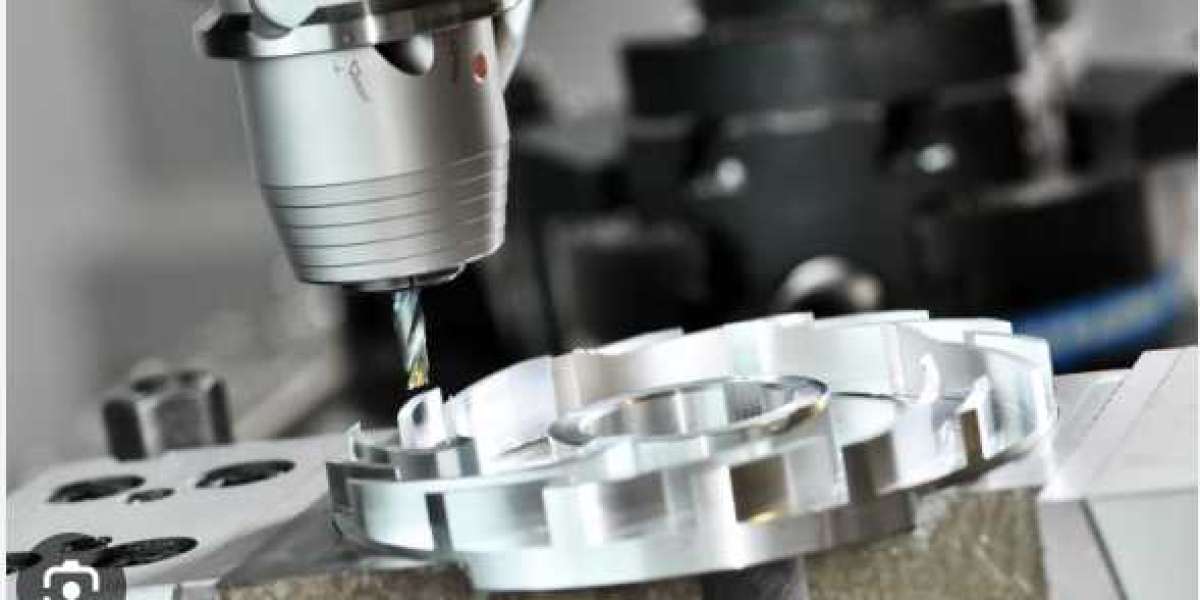In today’s fast-paced industries, speed is everything. It becomes even more important when you're dealing with a tight deadline in custom parts manufacturing. Understanding how to streamline custom CNC steel service can give you a competitive edge and keep your projects on track. But how can you ensure quick turnaround without sacrificing quality?
To achieve a fast lead time when manufacturing custom CNC steel parts, both customers and suppliers have to focus on some strategies to ensure a streamlined production and minimized delays.
Keep reading to learn about the key strategies to make sure fast lead time for CNC steel service. With the right approach, suppliers can reduce the production time and customers can get their products on time.
What is Custom CNC Steel Service?
A custom CNC steel service is a process where a manufacturer uses advanced CNC machining to shape steel parts exactly to a customer's specifications. Unlike standard parts that are mass-produced, a custom service is about creating components with unique dimensions, intricate features, or specific finishes.
In this service, a CNC shop works with the design that the customer provides. Engineers take that design and create a model using CAD software. That model is then transformed into a code that a CNC machine can read. It guides the machine to cut, mill, or drill the steel workpiece according to the design. This can be done for both single prototypes and large production runs.
The types of steel used in custom CNC machining vary based on what the part needs to do. Whether it’s mild steel for everyday applications or high-strength steel for demanding uses, the right material is chosen for the job. Also, customers can request specific finishes or even heat treatments to enhance properties like hardness or resistance to wear.
How to Boost up Custom CNC Steel Service for a Fast Lead Time
Achieving quick turnaround times in a custom CNC steel service requires collaboration between both customers and suppliers. From clear communication and efficient planning to leveraging the latest technology, several strategies can help shave down production time while ensuring a high quality.
For better understanding, we've divided these strategies into two categories:
- Strategies for customers to follow
- Strategies for suppliers to follow
A. What Customers Can do for a Fast Lead Time
As a customer, you can take these proactive actions for a fast lead time for CNC steel service:
1. Providing Clear and Detailed Design Information
One of the most important things you can do is offer a well-detailed design from the start. Providing 3D CAD models (such as STEP, IGES, or STL files) minimizes confusion and prevents delays during the initial design phase. These files give the supplier clear instructions on how to manufacture the part, reducing the need for back-and-forth clarifications.
In addition to CAD models, you should include comprehensive 2D drawings that detail dimensions, tolerances, and surface finishes. Providing all specifics about the part’s requirements reduces the guesswork on the manufacturer's part. Also, you should mention the steel grade to be used and its required mechanical properties, such as strength, hardness, or corrosion resistance.
2. Considering Tolerances and Finishes
It’s easy to want parts that are "perfect" down to the smallest detail, but achieving such precision can slow down the manufacturing process. If possible, adjust your tolerance requirements to match the capabilities of the equipment and the needs of your project. For example, if an extremely tight tolerance isn't essential for your part’s functionality, consider loosening it slightly. This can significantly reduce the time needed for machining.
Surface finishes are another area where flexibility can speed things up. Instead of requesting complex or custom finishes, consider opting for standard options like brushed or matte finishes, which are quicker to apply. Also, minimizing the need for post-processing (like polishing, coating, or additional treatments) can prevent delays in the final stages of production.
3. Prioritizing Communication
Open communication with the service provider is essential to keeping things moving smoothly. You should be responsive when the supplier reaches out with questions or requests for additional information. This allows both parties to address issues quickly and efficiently, without unnecessary delays. Also, be open to suggestions about design adjustments from the supplier, as it can streamline the production.
4. Choosing the Right Service Provider
If you're looking for fast CNC services near me for custom steel parts, you must select the right provider. It's better to look for a company that has a solid reputation for on-time delivery. You can start by asking about their quality management systems—are they ISO certified? A supplier with an effective quality management system is more likely to meet deadlines and deliver quality products.
Equally important is the supplier's experience of manufacturing parts similar to the ones you've ordered. Ask to see case studies or examples of past projects that showcase their ability to handle the complexity of your specific needs. A supplier with experience in machining parts like yours will be able to tackle challenges more efficiently, reducing the risk of delays.
B. What Suppliers Can do for a Fast Lead Time
For suppliers, ensuring fast lead times in a custom CNC steel service is essential to keeping customers satisfied and staying competitive in the market. Here are some strategies that you, as a manufacturer, can implement to speed up the production:
1. Optimizing Production Processes
You can do this by adopting lean manufacturing principles, which focus on eliminating waste and improving efficiency at every stage of production. Identifying bottlenecks and inefficiencies helps you to streamline workflows and minimize delays.
For example, implementing efficient task scheduling can ensure that tasks are completed in the most logical order, and that machine downtime is kept to a minimum. And real-time monitoring systems can track the progress of each project, allowing you to spot any potential delays early on.
2. Investing in Advanced Technology
High-speed CNC machines can process materials much faster than older machines. These machines are also equipped with advanced software that can optimize tool paths, making the cutting and shaping process more efficient.
Multi-axis CNC machines are especially useful for speeding up production. These machines can move the cutting tool in multiple directions at once, allowing you to machine complex parts in a single setup. This reduces the need for multiple passes and setups, ultimately cutting down the total machining time.
3. Efficient Workflow and Processes
From the initial design phase to final inspection and delivery, every step of the process should be optimized for speed and accuracy. One approach to improving workflow is by reducing setup times. For example, if a part requires multiple setups to machine, consider redesigning it to be machined in one setup, or combine several parts into a single setup.
In addition, clear communication between departments is key. Having design teams and machinists work closely together helps minimize errors and ensures the design is production-ready.
4. Skilled Workforce
Even the best technology can’t deliver fast lead times without skilled operators behind the machines. A highly trained workforce is essential for ensuring that CNC machines run smoothly and that production remains efficient.
Experienced machinists and engineers are capable of setting up machines quickly, programming them accurately, and troubleshooting problems as they arise.
5. Flexible Scheduling and Prioritization
You can enhance lead time flexibility of custom CNC steel service by adjusting the production schedules to accommodate high-priority or rush orders. This could involve rearranging the production queue, adding overtime shifts, or even bringing in extra staff during peak periods. If necessary, you have to dedicate certain machines or operators to high-priority tasks to keep critical orders moving on time.
Conclusion
Achieving fast lead times for a custom CNC steel service requires a combination of smart strategies from both customers and suppliers. Clear communication, efficient planning, and leveraging advanced technologies are key to minimizing delays and ensuring high-quality results.
Looking for fast, high-quality custom CNC steel parts? Zintilon delivers precision solutions with quick turnaround times. Our expertise in CNC machining and other manufacturing processes ensures top-quality results. Place an order to get your custom parts on time and experience the Zintilon difference.
-----------------------------------------------------------








